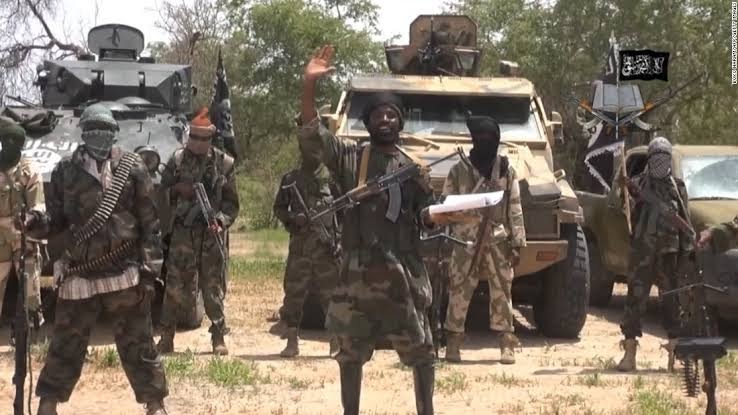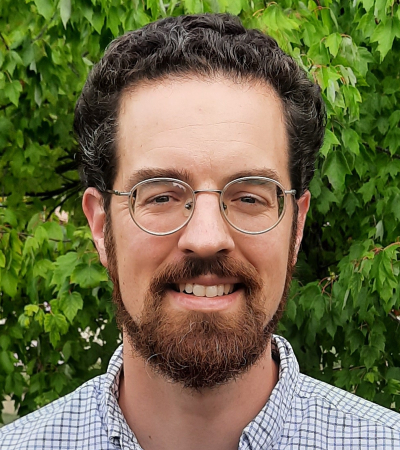If Boko Haram’s Leader Is Dead, What’s Next for Northeastern Nigeria?
The balance of power may be shifting, but not in favor of the Nigerian military.

Published by The Lawfare Institute
in Cooperation With

Editor’s Note: Rival jihadists may have killed longtime Boko Haram leader Abubakar Shekau, ending his years of mayhem and brutality. The University of Cincinnati’s Alexander Thurston describes Shekau’s impact over the years, explaining why many fighters remained loyal to him and also noting how many uncertainties plague observers’ understanding of jihadism in Nigeria.
***
Two deaths, one of which took some time to confirm, gesture at how implacable and opaque the Boko Haram crisis in Nigeria has become. On May 20, the Nigerian outlet HumAngle and other sources reported that longtime Boko Haram leader Abubakar Shekau had been killed by members of the Boko Haram breakaway faction the Islamic State West Africa Province (ISWAP). On May 21, Nigeria’s Chief of Army Staff Gen. Ibrahim Attahiru died in a non-combat-related plane crash along with 10 other officers. The two events are milestones in and of themselves; any history of Boko Haram would have to give Shekau, in particular, a prominent place in the narrative. But ultimately these individuals’ deaths are unlikely to affect the balance within what is ultimately a years-long stalemate between the Nigerian military and jihadists, with no victory in sight for either side.
Initially, not everyone was convinced that Shekau is actually dead, given his penchant for reappearing after being pronounced killed in the past. The Wall Street Journal, citing “officials, mediators, phone calls intercepted by a West African spy agency and internal intelligence memos,” regards his death as confirmed; the New York Times, though noting that “this time feels different,” has been a bit more wary.
A muddled end is grimly fitting for Shekau, who spent a decade in the spotlight but whose overall biography is obscure. Even the year of Shekau’s birth is hard to pin down—various sources cite dates from the mid-1960s to the mid-1970s. Hailing from the village of Shekau in the rural northeastern Nigerian state of Yobe, he moved to Maiduguri, the capital of neighboring Borno State, as a boy. When the journalist Chika Oduah interviewed his mother, still in Shekau village, in 2018, she shed little light on his biography or his motivations, saying she had not seen him for 15 years. His one-time followers in ISWAP, now his enemies, also appeared to know relatively little about his origins. In the 2018 ISWAP chronicle, “Removing the Tumor” (a reference to Shekau and his followers, whom ISWAP by then regarded as dangerous deviants), the authors write of Shekau’s “rough upbringing” and “harsh, rural life.” As an early follower of Boko Haram’s founder, Muhammad Yusuf, in the early 2000s, ISWAP’s chroniclers say that Shekau’s lectures were distinguished by “fervor, simplicity, joking, and plentiful similes”—which made him an entertaining draw for the emerging movement’s youthful followers. In videos from the late 2000s through the late 2010s, Shekau appeared bombastic, but this was likely a cultivated persona. “The warlord was more sober in person than the barking figure on YouTube,” according to an in-depth Wall Street Journal report on mediators’ efforts to free the Chibok girls, Shekau’s most famous victims.
Yet it was not all an act. Shekau’s critics within the jihadist fold regularly complained of a fatal capriciousness on his part, a tendency to lash out at dissent, both internal and external. Shekau put a profound stamp on the trajectory of Boko Haram beginning in 2009, the year of an ill-fated mass uprising by Boko Haram against Nigerian authorities. After police summarily executed Muhammad Yusuf in the aftermath of the clashes, Shekau rallied the remaining members who still had an appetite for fighting, taking the movement underground. Shekau often sabotaged any efforts at peace with the Nigerian government; for example, he likely ordered the assassination of one of Yusuf’s in-laws who attempted to start a dialogue with former President Olusegun Obasanjo in 2011, and Shekau showed little interest in negotiating anything other than hostage payments. Meanwhile, drawing on the connections of some globally minded jihadists within Boko Haram’s orbit, Shekau built connections with other jihadist movements, notably al-Qaeda in the Islamic Maghreb (AQIM) and al-Qaeda central. AQIM provided money and training, but the relationship frayed by late 2011 as Shekau disregarded AQIM’s advice and antagonized some of AQIM’s key interlocutors within Boko Haram. Shekau’s later relationship with the Islamic State (which officially lasted from March 2015 to August 2016) would suffer from similar tensions, leading to the emergence of ISWAP in 2016. Islamic State training, financing and input may have strengthened ISWAP somewhat and refined its calculations about how to relate to civilians, but ISWAP is ultimately, like Shekau’s faction, a parochial group whose main achievement is its survival in far-flung areas where the state is weak.
Shekau’s longevity and, on his own terms, his success communicate something about what makes Boko Haram—and even ISWAP—tick. His willingness to punish dissent with murder is a huge piece of the story, but it cannot be the only piece. “Removing the Tumor” and other sources tell of key moments when major field commanders with substantial followings of their own decided to remain loyal to Shekau. Another part of the story, then, is victory: Shekau earned loyalty first by rebuilding the movement at its ebb in 2009 and 2010, and then by achieving military feats that must have dazzled some of his subordinates. The culmination of this trajectory was the territorial conquests Boko Haram undertook, with Shekau as leader, in 2014 and 2015, which were only halted by the militaries of Chad and Niger. It was not until Boko Haram’s retreat that Shekau finally consented to pledge allegiance to another jihadist organization, the Islamic State, and it was not until desperate circumstances set in—“Removing the Tumor” describes a period of near-starvation sometime in 2015 and 2016—that Shekau lost a critical mass of support, enabling ISWAP to take the majority of the movement’s fighters in the divorce.
For a time, however, casting one’s lot with Shekau and following his orders had been a way to survive, to strike out at the hated Nigerian military (revenge is a motive for many ordinary fighters), and to have access to women and spoils. Shekau also showed a rough loyalty of sorts, sending forces to jailbreak Boko Haram fighters and commanders from jails, and even the notorious military detention site Giwa Barracks. Even after ISWAP split, hundreds of fighters remained in Shekau’s camp.
The initial uncertainty surrounding Shekau’s death is a reminder of how little observers know not just about him, but about Nigerian jihadist activities generally. The Nigerian military censors information, trumpets its successes while downplaying its setbacks, and sometimes accuses even respected organizations such as UNICEF and Amnesty International of carrying water for Boko Haram. In the northeast, Borno State Governor Babagana Zulum lamented in 2020 about “sabotage in the system that will not allow insurgency to end,” continuing a now years-long tradition of senior Nigerian civilian officials alluding, accurately or inaccurately, to corrupt interests at play in the crisis. Meanwhile, the Nigerian press abounds with rumors and poorly sourced reports. Both Nigerian and foreign journalists lack regular access (due to military restrictions or severe security concerns) to the front lines of the fight. Analysts, Nigerian and foreign, often relay insights they hear from anonymous sources close to the jihadists or within their ranks, but verifying their assertions is difficult. And jihadist propaganda gives a selective, and often skeletal, picture of events. Even determining who currently leads ISWAP is difficult: The journalist Ahmad Salkida, one of the foremost voices claiming to have sources within the jihadist scene, writes, “ISWAP currently has no substantive leadership.” All this uncertainty is fertile ground for shaky analyses or outright conspiracy theories. On the front lines, many ordinary soldiers hold a “belief that Boko Haram is a conspiracy involving the government and top brass of the military,” according to Temitope Oriola, joint editor-in-chief of the journal African Security.
What impact will Shekau’s death have? ISWAP is a formidable force, and killing Shekau could strengthen ISWAP further. Yet ISWAP’s activities have an inevitable ceiling. The status quo of profound instability in rural Borno State and its environs places a devastating burden on the millions affected by insecurity, poverty, displacement and hunger there, but Nigeria’s elite, grimly, have shown that they will tolerate this status quo. If ISWAP dramatically increased its ambitions by trying to capture Borno’s capital, Maiduguri, the military would likely repel the assault or mobilize rapidly to retake the city if it fell. And as with Boko Haram’s territorial conquests in 2015, there is also a tipping point at which outsiders will intervene, even at the cost of Nigerian sovereignty and pride. The question then becomes how far, and how long, ISWAP can go before disrupting the tense equilibrium in place. ISWAP may be smart enough not to expand too far, too fast. As long as it does not significantly upset this status quo, ISWAP retains influence over millions of lives, the ability to extract taxes from some rural populations, and a considerable amount of autonomy and freedom of movement.
Meanwhile, the death of Gen. Attahiru, though almost certainly accidental, nevertheless has symbolized for many observers the incapacity of the Nigerian military and the Nigerian government vis-a-vis jihadists. Attahiru was one of several new military service chiefs installed in January of this year. That reshuffle was meant to revitalize the country’s approach to insecurity not just in the northeast but also in other theaters of violence, such as the northwest, parts of which are plagued by bandits and intercommunal violence. In the intervening four months, few signs of a new approach have manifested other than a flurry of meetings, visits to the front lines, and a new (or new-ish) National Centre for the Control of Small Arms and Light Weapons. Assessing the meaning of Attahiru’s death, Oriola wrote bluntly, “A military in the region whose organizational structure, materiel, routine bureaucratic processes and motivation can defeat terrorism in the Lake Chad area does not currently exist.” As a number of observers have noted, it is significant that it was not the Nigerian military, but ISWAP, that appears to have killed Shekau. Even more significant is that the Nigerian military appears to be in no position to capitalize on the death of the man who has been its number-one enemy for the past decade.





